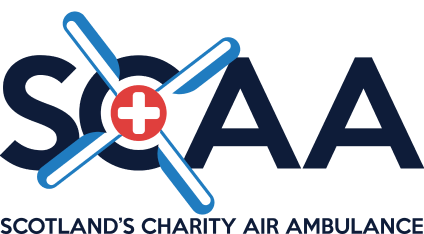SCAA's Perth-based Helimed 76 air ambulance will operate the charity’s first night vision capability, enabling crews to safely respond to emergencies in Scotland after dark.
Thanks to the ongoing generosity of our supporters, including an extremely generous donation from players of People’s Postcode Lottery, we can fund vital equipment to make missions which have previously proved challenging – due to restrictions on our night flying – become accessible.
Crews at Perth will be the first to undergo demanding training to operate the state-ofthe-art night vision imaging system (NVIS) equipment in preparation for this winter’s deployment on Helimed 76. SCAA Chief Executive David Craig explained that the night vision capability would allow the charity to respond to challenging HEMS (Helicopter Emergency Medical Service) incidents during periods of darkness.
“SCAA will be able to deploy to non-surveyed locations anywhere in Scotland during darkness hours this winter using the very latest technology, to the benefit of both patients and crew,” he said. “This will ensure each duty shift is unimpeded by when the sun sets or skies darken, enabling SCAA to respond more often to those most seriously ill or injured.
David explained that night vision capability marked a significant investment for SCAA, funded entirely by the support of the people of Scotland – including players of People’s Postcode Lottery.
“Every single supporter should know that they have helped SCAA achieve this latest ambition through their generous donations. You are, quite literally, life savers.”
“SCAA has ensured that your donations have been converted to investment in improving our frontline operation.”
Our pilots and paramedics are our frontline delivery team who recognise the benefits NVIS capability will bring for patients, crew and the charity.
Senior base pilot at Perth, Captain Kimball Chilcott, explained: “Civil Aviation Authority rules don’t allow us to land at the scene of an emergency by night,” he said, “as we are unable to perform the required visual airborne reconnaissance to survey the landing site for safety hazards.
“This means during the dark winter hours, we are limited to operating out of lit surveyed sites such as hospitals and airports – which reduces our operational capability considerably.
“Having NVIS will give us the potential to respond to time-critical emergencies in the dark, as it enables us to have the situational awareness and required visual field to safely determine the suitability of a potential landing site,” he added. “During the winter months, NVIS will make us available to respond to HEMS throughout the entirety of our shift, in turn making us more able to reach those who need us most.”








